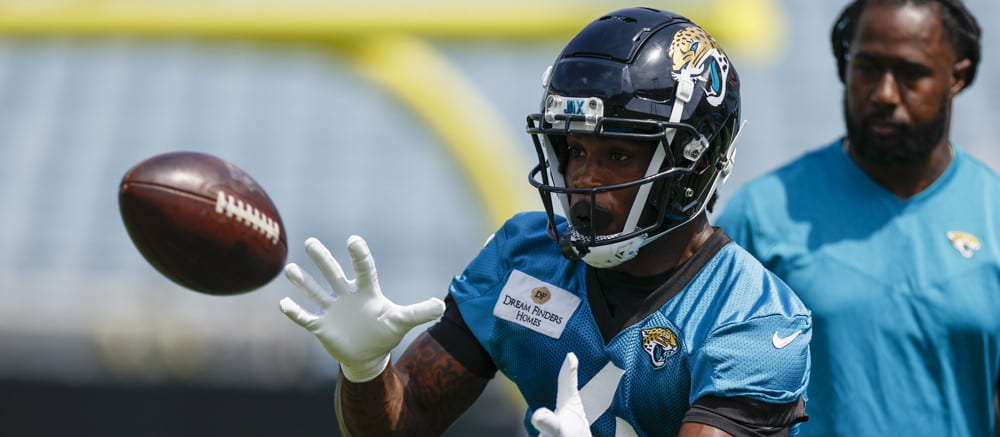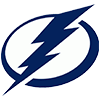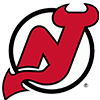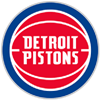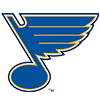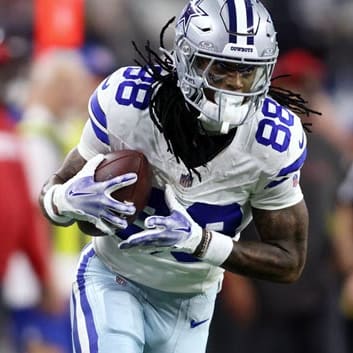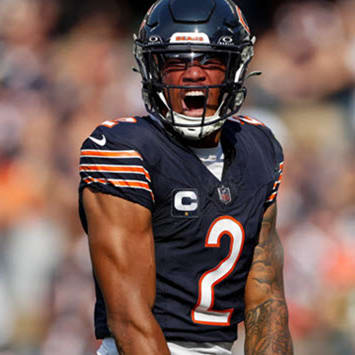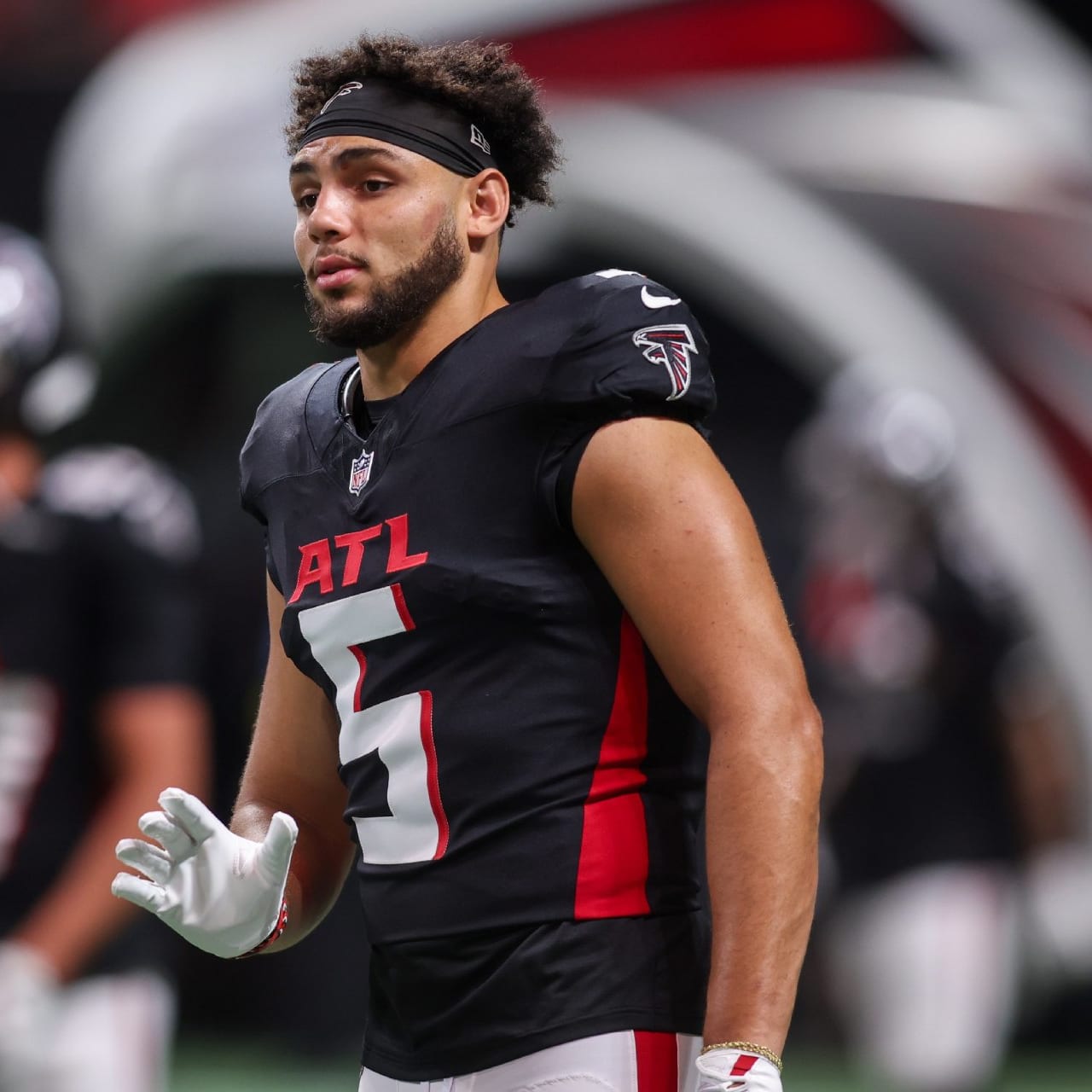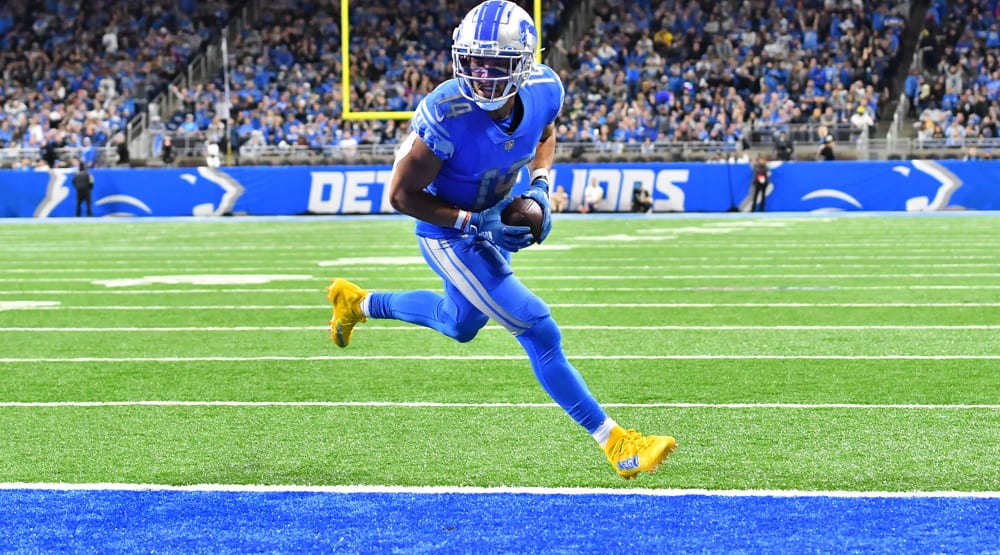This is the third and probably last post in a series looking at the handcuff options for the top running backs in the ADP in Underdog Fantasy best ball contests. Not all backup running backs are the same, and the 'handcuff' for a given case isn't necessarily obvious. In some cases there's no viable handcuff at all behind the starter, be it due to lack of viable candidates or too many viable candidates.
This article means to provide a scouting report on the relevant handcuff candidates, identifying the standouts and separating the useful from the pointless. After looking at Christian McCaffrey, Austin Ekeler, Bijan Robinson and Jonathan Taylor in the first entry, and the last post Nick Chubb, Tony Pollard, Saquon Barkley and Derrick Henry, this one will break down the players behind Rhamondre Stevenson, Josh Jacobs, Breece Hall, Najee Harris and Travis Etienne.
Sign up for Underdog to receive a free 6-month subscription to RotoWire and first deposit match up to $100 with promo code RWNFL. Claim this special offer now at https://play.underdogfantasy.com/pc-MyVn4cbt6l.
Rhamondre Stevenson, NE (26.5 Underdog ADP)
The candidates:
Pierre Strong (207.8 Underdog ADP)
Kevin Harris (216.0 Underdog ADP)
Ty Montgomery (215.9 Underdog ADP)
J.J. Taylor (N/A Underdog ADP)
Stevenson is not a player easily imitated, neither in terms of efficiency nor volume. Stevenson is one of the biggest running backs of recent memory and can handle a mammoth workload, an outcome he sees to thanks to a strong three-down skill set. The Patriots have a couple guys who can handle pass-catching, and one who can take on a big workload, but none for whom both are true at once.
Pierre Strong is probably the favorite to emerge as the first running back off the bench behind Stevenson, if only because he was a fourth-round pick in 2022. Strong is also a notable change of pace from Stevenson, trading size (207 pounds versus 231) for speed (4.37-second combine 40 versus 4.64-second pro day 40). Particularly on plays like draws and screen passes, Strong should be an effective player on the 25 or so snaps that might be up for grabs behind Stevenson.
Of course, at only 207 pounds Strong is not a realistic candidate to inherit Stevenson's full workload if Stevenson were to miss time. Strong would see more playing time and usage both in such a case, but he might be capped loosely at something like 12 carries and three catches per game. Strong saw similar usage caps for most of his otherwise distinguished career at South Dakota State, though he did produce very well with a workload of 16 carries per game in his senior season.
If Strong were unable to fully carry Stevenson's workload then the remainder of snaps would have to split between Kevin Harris, Ty Montgomery and/or J.J. Taylor. This of course is assuming the Patriots don't add a free agent running back, though they might try to after James Robinson's knee didn't work out. The Patriots have been linked to Dalvin Cook, also.
Between Harris, Montgomery and Taylor, though, only Harris is capable of taking on a notable workload. Montgomery struggles to get to Sunday of any given week without getting hurt, so if he were given an actual workload it would likely break him in a short amount of time. Montgomery does have a definite advantage over Harris when it comes to passing-down abilities, but if Montgomery physically can't play then it's a moot point. Taylor, meanwhile, just doesn't look like a real NFL running back at 5-foot-5 with 4.6 speed. Not just that, but Taylor was only decently productive in college at Arizona and hasn't done anything of note in three NFL seasons, mostly spent on the practice squad for New England.
The last paragraph is all to say that if Stevenson were to miss time then we would likely see both Strong and Harris, with Harris taking more carries between the tackles while Strong gets outside carries, draws and passing down snaps. Harris (5-foot-10, 221 pounds) has a very dense build and a low lean as a runner, which pairs well with his standout explosiveness (38.5-inch vertical, 126-inch broad jump). Although Harris might not be much of a passing down back, he could prove to be a big-play threat as a runner. He's not a plodder – Harris was very explosive during his two healthy seasons at South Carolina, turning 206 carries into 1,317 yards and 19 touchdowns (6.4 YPC, 9.2 touchdown percentage).
Verdict: Pierre Strong will likely be the first back off the bench behind Stevenson, offering explosiveness but likely limited volume even if Stevenson were to miss time. Kevin Harris would be a good bet to match Strong's carry count if Stevenson were out, though Strong would likely be the starter and have nearly all of the passing-down work to himself. Ty Montgomery literally gets hurt every year and J.J. Taylor is a practice squad player. It should be remembered, though, that the Patriots meant to have James Robinson as a veteran addition and might yet seek another one now that they don't have Robinson.
Josh Jacobs, LV (28.4 Underdog ADP)
The candidates:
Zamir White (208.4 Underdog ADP)
Ameer Abdullah (216.0 Underdog ADP)
Brandon Bolden (N/A Underdog ADP)
Sincere McCormick (N/A Underdog ADP)
Brittain Brown (N/A Underdog ADP)
Austin Walter (N/A Underdog ADP)
Some had predicted Zamir White would steal touches from Josh Jacobs last year, and after a silent rookie season it's not surprising that no one any longer wants to carry that torch. It's unfair to White, because he's still a decent prospect and it's not his fault that unreasonable expectations were placed on him. With that said, he does not presently and will never project as the sort of player who can take touches from a player like Jacobs. What White might be is a player who can play a productive role off the bench, likely as a rushing specialist, and one who might hold up as a decent starter for limited periods of time (think, say, maybe six weeks). White started over James Cook and Kenny McIntosh because he's the best pure runner of the three, particularly for power functions. The problem for White's longevity is that as an upright runner (6-feet, 214 pounds) he lacks the natural anchor you want in a power-dependent runner. His speed (4.47-second combine 40) is quite good, and he runs like hell, so White can definitely hammer between the tackles with effectiveness. While he probably can't do it for more than a month or two, White is capable of providing some considerable number of quality starts (though with very limited pass-catching production) if Jacobs were to miss time.
The rest of the group is underwhelming. Brittain Brown and Austin Walter are practice squad players and not much more. Brandon Bolden has always been productive from scrimmage but has never earned reliable playing time there, including last year (77 snaps). Apparently he's just never going to get his shot. Even Ameer Abdullah (168 snaps) played more than Bolden. Granted, Abdullah was fairly productive off the bench, catching 25 of 32 targets for 211 yards and one touchdown (78.1 percent catch rate, 6.6 YPT) on just 168 snaps. Abdullah was also a special teams staple (224 snaps), so he's probably making the team.
Sincere McCormick lurks as a likely practice squad player, though one more distinguished than Brown or Walter. Unlike those two, McCormick demonstrated the ability to (A) produce as both a runner and pass catcher in college and (B) do so at high volume. Though small (5-foot-9, 205 pounds) and slow (4.61-second combine 40), McCormick likely has some amount of innate ability as a running back, and he might hold up if the team has to turn to him in an emergency. It would likely require an actual emergency, though.
Verdict: It's Zamir White or it's nobody. With that said, the Raiders would likely use a rotation even if White started games in the absence of Jacobs, perhaps most notably with Ameer Abdullah taking more passing-down snaps.
Breece Hall, NYJ (31.1 Underdog ADP)
The candidates:
Michael Carter (213.9 Underdog ADP)
Israel Abanikanda (215.0 Underdog ADP)
Zonovan Knight (216.0 Underdog ADP)
Keep in mind that the Jets have been extensively linked to Dalvin Cook in free agency, and even if they don't sign him their initial interest could indicate curiosity in other free agent backs. Among this group, though, the Jets have a few options that could compete for playing time.
Zonovan Knight went undrafted out of North Carolina State in 2022 but his rookie season was fairly successful. Though the ending itself wasn't so great, there was a three-week stretch where he ran for 230 yards and one touchdown on 46 carries from Weeks 12 to 14. He was also effective as a pass catcher. Knight runs hard and can bounce off arm tackles, it just isn't clear if he can do enough aside from that to be even an average rotational runner, let alone a potential starter. With just a 4.58-second 40, 31-inch vertical and 114-inch broad jump at 5-foot-11, 209 pounds, Knight likely has neither the athleticism to win with elusiveness nor the frame to withstand a power-dependent running style over a starter-level workload for more than a couple weeks at a time. He was always a rotational back at North Carolina State, and not with anyone impressive.
Michael Carter went from "the heartbeat of the offense" in training camp to backing up Knight at the end of the year, but this was always a bizarre decision that seemed more like desperate flailing than a sound decision from the since-fired Mike LaFleur. Though not a viable starter in most offenses (ie, any that runs sufficiently), Carter is a good rotational back prospect and a much better one out of North Carolina than Knight out of North Carolina State. The two both ran for 3.5 yards per carry last year, but Carter (A) did it over much bigger carry volume (114 versus 85) and (B) didn't have his yard count juiced by a fluky 48-yard carry like Knight did. If you remove Knight's longest run his YPC drops to 3.0, whereas if you remove Carter's longest run his YPC drops to 3.3.
The rookie fifth-round pick Israel Abanikanda finds himself in a tough position, meanwhile. He's a better pure runner than Carter and Knight right now, and there's truly zero question about that. The problem for Abanikanda is that he doesn't turn 21 until October 5, which means he's at a major experience disadvantage against Carter and Knight, as both have seen a lot more reps on passing downs. There's a chance Abanikanda just makes faster progress in that area than expected, but teams are notoriously stingy (and arguably obsessed to a superstitious extent) about withholding playing time from young backs who don't have an obvious draft capital advantage. Abanikanda might need injury to open up his opportunity, but the Jets coaches would likely have trouble putting him back on the bench after that point. Even in his rawest form, Abanikanda can run at the NFL level right now, potentially even at a starter level. His production at Pittsburgh was exceptional, especially in 2022 (6.0 YPC, 8.4% touchdown rate over 239 carries in 11 games), and with a 4.45-second pro day 40 at 216 pounds Abanikanda is both bigger and much faster than both Carter (4.54-second pro day 40 at 201 pounds) and Knight (4.58-second combine 40 at 209). The question of Abanikanda outranking Carter and Knight is a matter of when not if, but the 'when' could still be obnoxiously far from now.
Verdict: If Breece Hall were unavailable or limited then it would be difficult to predict where his playing time would go, especially early in the year. At some point in time Israel Abanikanda will outrank both Michael Carter and Zonovan Knight on the depth chart, and in the meantime the rookie is clearly the best pure runner of the three. Not turning 21 until October, though, makes Abanikanda exceedingly young for a rookie. Both Knight and especially Carter have seen more passing reps than Abanikanda to this point, so for Abanikanda to jump ahead of them early on would be like a kid skipping a grade and then also getting the highest test scores in his new grade. It could happen, but it's asking a lot of Abanikanda in his rookie year. Injuries do happen, though, and any rep missed by Carter or Knight could hasten Abanikanda's arrival.
In the meantime, Carter is a better overall threat from scrimmage than Knight. Though Knight is bigger than Carter it's only by a trivial amount, and Knight isn't a sudden runner in short yardage. In other words, there's no reason to apply the traditional reductive reasoning that Knight would be favored over Carter in short-yardage situations on the basis of being heavier. Knight likely needs both Hall and Carter to miss time in order see snap counts like he did in 2022, and even then Abanikanda would start making more noise with each rep.
Najee Harris, PIT (37.9 Underdog ADP)
The candidates:
Jaylen Warren (135.3 Underdog ADP)
Anthony McFarland (N/A Underdog ADP)
Anthony McFarland should make the Pittsburgh roster as their RB3, but the former fourth-round pick is unlikely to challenge incumbent RB2 Jaylen Warren. McFarland is much faster than Warren (4.44-second 40 versus 4.56) and even ran that faster 40 at a higher weight (208 versus 204), but for whatever reason Warren just has a bit more natural anchor to him as a runner. Warren plays like a bowling ball, whereas McFarland is a guy more easily knocked off his feet even at a higher weight.
Warren is also more naturally talented than McFarland as a pass catcher, and that's the calling card that keeps Warren on the field for Pittsburgh. Kenny Pickett will check down plenty, and as a checkdown target Warren was very effective in 2022. Warren was also effective as a runner, though to what degree is overstated in much recent analysis – outside of three 20-yard carries Warren averaged 4.1 yards per carry on the remaining 74 attempts, so it's at best an inconclusive sample and at worst lining up to be no different than Najee Harris' rushing average. You'll hear people say Warren is better than Harris, and it's a patently hysterical position.
With all that said, Warren would likely be able to withstand volume if Harris were to miss time. At 5-foot-8 and reportedly up to around the 215-pound range, Warren has an extremely dense build, one that should withstand repeated hits between the tackles. Warren took on big workloads at Utah State and Oklahoma State in college, so there's reason to think he could do it in the NFL too. What should be understood is that Warren would still likely lose a couple MPH on his fastball if here were forced to take on volume, and he doesn't have much stuff to work with in the first place. In fact, if Warren is up to 215 pounds then he's likely running no better than a 4.65-second 40, given that he ran a 4.56 at 204. Warren's skill level is substantial and he has the frame to withstand a starter's workload, but he can't create space himself and won't be able to turn the corner against a fundamentally sound defense.
Verdict: Jaylen Warren is not a threat to Najee Harris, but if Harris were to miss time then Warren's frame should be able to withstand a starter-level workload. Though Warren would likely see diminished efficiency returns relative to 2022, he would likely be able to remain on the field through all situations, including pass-catching ones. This makes Warren one of the league's true fantasy handcuffs, though one with overstated utility whenever Harris is healthy. Anthony McFarland would likely play a small role off the bench in such a scenario.
Travis Etienne, JAC (41.6 Underdog ADP)
The candidates:
Tank Bigsby (141.7 Underdog ADP)
D'Ernest Johnson (215.9 Underdog ADP)
JaMycal Hasty (216.0 Underdog ADP)
Here we have two veterans and a rookie. Tank Bigsby is the most popular as the rookie third-round pick, to the point that he tends to go in the 12th round while Hasty and Johnson tend to go undrafted. Bigsby was a good collegiate player at Auburn, where he ran for 2,903 yards (5.4 YPC) and 25 touchdowns over 35 career games, but the question of whether he was a good draft pick in the third round is a different issue. As much as it's assumed that Bigsby will serve as the top backup to Etienne and play a significant role off the bench, he has no obvious calling card among this group. Bigsby is a poor passing-down player to this point and as a runner he doesn't look starter-viable, both because his production at Auburn was middling and because Bigsby's athletic testing was less than good. At 6-feet, 210 pounds he lacks anchor yet he has no standout athleticism to offset his poor leverage, only offering a 4.56-second 40-yard dash and mediocre jumps (32.5-inch vertical, 119-inch broad jump). With average production and average at best athleticism, Bigsby profiles as a nondescript backup in the NFL. Bigsby isn't just much slower than Etienne, he's also smaller and a worse pass catcher. Bigsby is a lot like if you took Zamir White and made him slower.
Of course, Bigsby could have handcuff value even if he's incapable of taking playing time away from Etienne. So then the question is, if Etienne were to miss time, can Bigsby do enough to hold off the veteran duo for the newly available workload? On passing downs the answer is a resounding 'No,' because JaMycal Hasty is the team's designated Jerick McKinnon – a zero as a runner but one who pass blocks effectively and occasionally offers a checkdown target to get a little closer to the chains. Hasty probably isn't going to be useful in fantasy either, even if Etienne misses time, but Hasty should play enough passing downs to make Bigsby entirely run-dependent for fantasy value.
If Bigsby can't hold off Hasty for passing down work, can he at least hold off D'Ernest Johnson for rushing work? This question goes a little more favorably for Bigsby, who probably has more raw running ability than either of Johnson and especially Hasty. Johnson was productive off the bench for the Browns in 2021 and has a ton of skill as a running back, but Johnson cruelly is stuck with some of the worst athleticism at running back the league has seen in many years, running a 4.81-second pro day 40 at just 200 pounds. I'd say Johnson clearly has more skill as a runner and pass catcher both than either of Bigsby or Hasty, but 4.8 wheels is running in quicksand at this level. It's not fair, but the guy just doesn't have much of a shot of holding up in the NFL with such poor athletic tools.
Verdict: Tank Bigsby likely has the most rushing ability of the three backups but the least passing-down ability between himself, JaMycal Hasty and D'Ernest Johnson. Hasty is the team's likely RB2 while Travis Etienne is healthy, because Hasty is the team's best back in blitz pickup and is only outranked by Johnson and maybe Etienne in terms of pure pass-catching ability. The result is a likely committee for the scraps behind Etienne, mostly gone to Hasty, and even if Etienne misses time Bigsby would likely, at best, split snaps with Hasty.


